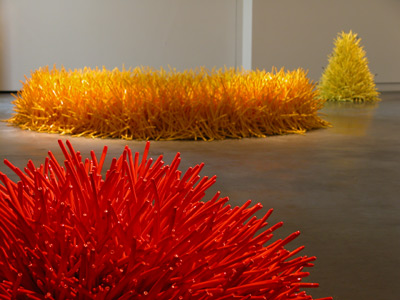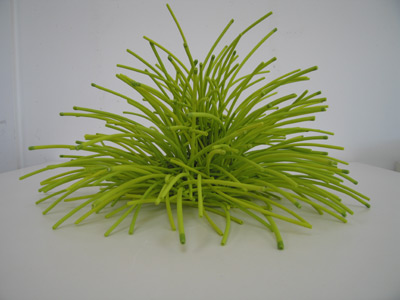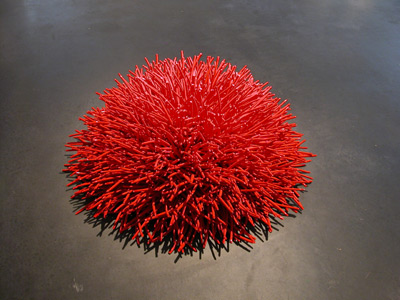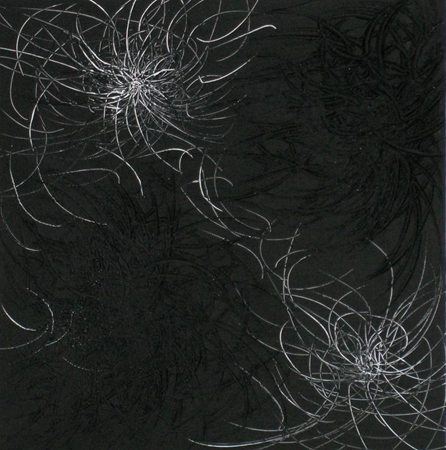IMAGES: BEAN FINNERAN Google Images
WEBSITE: BEAN FINNERAN
CONTACT:
Bean Finneran is represented by the following galleries.
- Braunstein/Quay Gallery, San Francisco email | website
- Gail Severn Gallery, Ketchem, Idaho email | website
- Galerie Favardin & de Verneuil, Paris, France email | website
- Pacini Lubel Gallery, Seattle email | website
- PDX Gallery, Portland, Oregon email | website
- Perimeter Gallery, Chicago email | website
LINKS: ART LTD.MAGAZINE
BIO/CV: Bio: Born 1947
Education: Goucher College, Baltimore, MD/ University of Michigan Ann Arbor, MI/ Museum School, Boston Museum of Fine Arts, MA/ Mass College of Art and Design
Bean Finneran lives near San Francisco in an isolated spot on the edge of a salt marsh. This is important in understanding her work, which is constantly thought about and conceived in front of this spectacle of nature that is unchanging, yet changes with every moment.
STATEMENT from Yves Peltier
http://www.favardin-verneuil.com/bean_finneran_en.html
Through her work, Bean Finneran reveals this nature that she loves. But let’s be clear about this: she doesn’t try to imitate it. Her works are deliberately abstract. What Bean Finneran shows us is a reconstruction that uses observed elements that form the basic principles of life and not its outer appearance. Bean Finneran is not interested in representing nature through landscapes as man has been doing through centuries of artistic activity.
Her privileged observation of nature has enabled her to see the unchanging forces and principles that lay behind the apparent disorder of the spectacle that life offers. Living, organic matter is a construction made up of components – always the same – that are assembled for a more or less limited period. Interpreted symbolically, these become a series of united, organized signs formed by a single basic entity: a coil of clay given a random, curvilinear form by firing. Bean Finneran incorporates these forces and principles inherent to nature into her creative processes and makes them deliberately perceptible in the finished work through an apparent disorder from which – despite everything – we are given an impression of balance.
Bean Finneran seeks to share her sensitive experience of nature in the galleries and museums that exhibit her works. These are in an urban environment in limited spaces that are, by their very essence, totally different to the open, unlimited spaces offered by nature in which human presence is necessarily sporadic. This choice is calculated and even strategic. The elements taken – mentally – from nature are, in the end, simply transposed here. The ceramics, the pigments used and the setting-up time are the vehicle for the sensory impressions that Bean Finneran experiences. She deliberately and warm-heartedly seeks to meet her public. The visitor is thus invited to relive her experiences and feel her impressions through her works.
Her work bears some similarities to Land art, from which she has disassociated herself. She retains the basic principles but reinterprets them to suit her needs. The use of untreated materials and simple, even primitive techniques – build-up –, places her work within a romantic vision of life close to nature.
Statement from http://pdxcontemporaryart.com/finneran
Bean Finneran works with one simple elemental form, a hand rolled curve of clay, repeated and grouped into primary geometric constructions. The clay is a connection to time, to the earth and to human culture. The curve is a meditation on multiplicity in nature like individual blades of grass in a field.
Following rhythms of renewal and transformation in nature the composition of the sculptures is transitory. Each one of a thousand individual curves is physically independent from the next so that when a sculpture is moved it must be disassembled and then reconstructed curve-by-curve. The curves are reinterpreted every time a sculpture is assembled; ever similar and always unique. The process of creating the sculptures has no beginning or end.
IMAGE
Penelope, 2000. C-print 53″ x 40″ Photo credit: Courtesy, Alan Finneran and Braunstein/Quay Gallery
The husband and wife team of Alan and Bean Finneran have been important national, international and local artists for four decades. In 1972 Alan founded SOON 3 in the Bay Area, an avant-garde theatre company based on the principles of the Bauhaus, for which Bean was co-producer, co-director and performer. Their first performance piece was presented at SFMOMA in 1975, and their company continued to give performances throughout the world, including Egypt, until 1999. Before founding SOON 3, Alan was co-director of Zone Theatre in Boston, from 1968 to 1972.
Their performances pieces, which Alan terms “Performance Landscapes,” are constructed architectural objects that look like abstract artificial technological landscapes. Within and upon these constructed environments, the performers are united with their audience through music, lighting, video and slide projections, and through the constructions themselves which sometimes move and change their shape during the performance. Since 1999, both Bean and Alan have turned their attention to different aspects of their performance art, Alan to photography and Bean to hand-built site-specific ceramic sculptural installations.
Works from all aspects of the prolific careers of these two highly creative and energetic artists are on view at Braunstein/Quay Gallery in San Francisco, an exhibition titled “Three Decades of Sculpture, Performance and Photography.” These works include maquettes of their constructed performance environments, photographs and videos of their performances, ten striking hyper-realistic C-print photographs by Alan, and three ceramic sculptures by Bean.
The maquettes for performance pieces, fabricated by Dave Maynard, include Vapor Avenue (San Francisco, 1994), Poison Hotel (Theater Artaud, San Francisco, 1988), Asylum Red (San Francisco, 1992), Silly Bunny and the Toxic Folly (1995, Cairo, Egypt), and Veer (1989, San Francisco). A set piece is also on view, Voodoo Automatic (California and European tours, 1983).
The nude figures in Alan’s beautiful “portrait” photographs are strikingly arranged in compositions that transform the subjects and their relationships into narrative symbols and icons. This intended effect is particularly successful in Dialogue (1999), Penelope (2000), Winter Part 1 and Winter Part 2 (2000), In Front of the Green Door (2005), and The Bride (2009). In Penelope, a beautiful full-length nude woman is seated in a contemporary metal chair before a window. She holds a pair of binoculars. The humorous and clever allusion to Penelope, the wife of Odysseus awaiting the return of her wayward and wandering husband, creates a symbolic narrative layer that casts Homer’s classic heroine into a delicious contemporary construct. The figure is so graphically realistic, with colorful details and visual evidence of her great and unusual beauty, that a temporal transposition occurs whereby it is possible to visualize her as a contemporary reincarnation of the epic heroine, and she thereby becomes symbolic of all women awaiting the return of their lovers. Dialogue is also a complex visual narrative where a diptych with two nude women, one looking at the other in a bathtub while she bathes—from the front and from the back—creates a visual conversation between the reflective and reflecting images. More than a lesson in seeing, this photograph duplicates the complex optical process of vision itself.
Bean Finneran forms her ceramic sculptures by laying out and building up curved, hollow ceramic tubes, glazed black or white, with tips of different colors—red, yellow, and black. She starts out simply by laying the tubes in the shape she wishes to fill and construct, and then as the tubes are piled higher and higher, they begin to create negative spaces, where the other tubes are inserted as the piece grows on itself. The process is like the reverse of pickup sticks, where instead of deconstructing a scrambled nest of crisscrossed sticks by removing them one at a time, the curved ceramic tubes are built up into a predetermined shape, one tube at a time.
Bean has prepared a DVD video of this process, available at the gallery, which demonstrates and explains the process that anyone can use to make a sculpture. She created White Ring, Red/Black and Black Ice specifically for the size and shape of spaces available in the gallery. The former is an impressive white toroid piece almost 12 feet in diameter; and the latter is a conic-shaped structure looking much like a thorny beehive.
This is an important exhibition for anyone interested in the arts, not only because it documents a rich and rewarding history of an important avant-garde performance company in the San Francisco Bay Area, but also because the works of these two artists are singularly rewarding and powerful.
- bean finneran by richard speer Jan 2010

White Ring
2007
Low fire clay, glaze, acrylic stain
24″ x 60″
Photo: courtesy of Bean Finneran and PDX Contemporary Art
It was Bean Finneran’s “Eureka!” moment. As she approached her fiftieth birthday, she took a long look at her past and present. From her roots in avant-garde theater in Boston and San Francisco, she had grown into an entrepreneur with a successful jewelry design business, but now she found herself at a crossroads. Either she could invest all her time and energy into growing the business or she could go back into her studio and make art. She opted for the latter and began painting, albeit without much satisfaction. “I couldn’t come up with any kind of personal statement as a painter,” she recalls, “so after awhile I decided to start working with clay again. I had never formally studied ceramics but thought I would just bumble my way through.”
In her studio–which is sited off a boardwalk at the edge of a salt marsh in Marin County, north of San Francisco–she began rolling up thin sheets and coils and firing them in the kiln, not knowing what she would do with them. As she finished each batch, she placed the cylinders on a pedestal, “but they kept rolling all over the place…” To remedy the problem she started making tiny twists in the next coils. This subtly curvilinear form, organic and pleasing to the eye and hand, resonated with her. As she laid them down on the pedestal, then outside on her deck, they began to pile up, and the negative space between them took on intriguing contours. Soon, what began as a jumble became a composition. “A friend of mine came over and looked at them,” she recalls, “and she told me, ‘You ought to keep going with that!'”
And she did. In the decade since, beginning with a debut exhibition at Braunstein/Quay Gallery in San Francisco, she evolved her happy accident into site-specific installations of startling complexity and beauty, in Europe, Asia, and the Americas. What started as intimate works of 300 or 400 coils evolved into pieces that reach up to 30 feet long and contain up to 70,000 coils, each of them hand-rolled, -fired, and -painted with acrylics and glazes. Her February show at PDX Contemporary Art in Portland will feature her signature forms, which evoke, but do not replicate, sea creatures, nests, and wreaths. She will also exhibit a series of drawings, never shown before in Portland. Other recent stylistic developments include work made with photographic prints and hand-glazed manufactured bricks.
Finneran says she finds constructing the intricate works “repetitive and meditative” but not tedious. Still, they do present challenges. For example, the coils are not glued or adhered in any way; they derive their structural integrity solely from gravity and the strength of their interwoven compositions. They can be knocked over, as happened, quite spectacularly, when a child barreled into one during an opening at the Nancy Margolis Gallery in New York. In addition, if the artist doesn’t like how a completed piece relates to other pieces in an exhibition space, she has been known to completely disassemble and reassemble the work a foot or two away from its original placement, a process that can add a day or more to installation.
But these challenges and the obsessiveness they demand are part and parcel to Finneran’s method. She has resisted suggestions to create permanent sculptures because such permanence would preclude “the absolute possibility of transformation,” which she finds essential. To her, the time-intensivity and steady-handed high-wire act of creating and installing these works recalls her years in theater. “Both are about arriving in an empty space and putting something together for a limited period of time,” she observes.”And in both, you have a sense that you’re not totally in control. I think that’s a wonderful thing.”
Bean Finneran’s work can be seen this winter at PDX Contemporary Art in Portland, from February 2-27, 2010.






